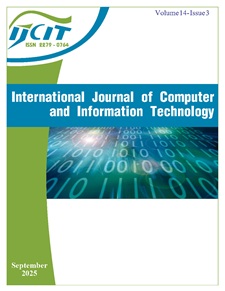Assessing IPv6 Readiness and Adoption in Palestine, A Case Study with Strategic Recommendations
DOI:
https://doi.org/10.24203/ja0zne27Keywords:
Ipv6, Palestine, ISPsAbstract
This research examines the current state of IPv6 adoption in Palestine, comparing it to the global and regional adoption trends, particularly in Arab countries. While the global IPv6 adoption rate exceeds 45%, and Arab countries average 12.79%, Palestine remains at a negligible adoption rate. Through a mixed-method approach that includes experiments, technical analysis, and stakeholder interviews, the study highlights the readiness of end-user devices for IPv6, primarily due to international compliance standards. However, significant challenges exist within Internet Service Providers (ISPs) and large enterprises in Palestine, such as dual-stack resource demands, insufficient technical expertise, and lack of customer demand. This paper underscores the urgent need for a national strategy, stakeholder collaboration, and increased awareness to accelerate IPv6 transition in Palestine. Recommendations are made to address these obstacles and position Palestine for future compatibility in the global internet ecosystem.
References
[1] OSI model, Cloudflare. [Online]. Available: https://www.cloudflare.com/learning/ddos/glossary/open-systems-interconnection-model-osi/.
[2] The promotion, protection and enjoyment of human rights on the Internet, Article 19. [Online]. Available: https://www.article19.org/data/files/Internet_Statement_Adopted.pdf.
[3] IANA Unallocated Address Pool Exhaustion. [Online]. Available: https://ipv4.potaroo.net/.
[4] IANA IPv4 Address Space Registry. [Online]. Available: https://www.iana.org/assignments/ipv4-address-space/ipv4-address-space.xhtml.
[5] Planning Guide/Roadmap Toward IPv6 Adoption within the U.S. Government, Jul. 2012. [Online]. Available: https://assets.cio.gov/assets/files/resources/2012_IPv6_Roadmap_FINAL_20120712.pdf.
[6] Google collects statistics about IPv6 adoption in the Internet on an ongoing basis. [Online]. Available: https://www.google.com/intl/en/ipv6/statistics.html#tab=ipv6-adoption.
[7] Google Per-Country IPv6 adoption. [Online]. Available: https://www.google.com/intl/en/ipv6/statistics.html#tab=per-country-ipv6-adoption.
[8] Facebook total IPv6 adoption (Dec. 2025). [Online]. Available: https://www.facebook.com/ipv6/?tab=ipv6_total_adoption.
[9] Facebook Per-Country IPv6 adoption (Dec. 2025). [Online]. Available: https://www.facebook.com/ipv6/?tab=ipv6_country.
[10] Timeline of HTTPS adoption (2019). [Online]. Available: https://timelines.issarice.com/wiki/Timeline_of_HTTPS_adoption.
[11] IP Transit and the Tiers of Transit Providers, Noction, Apr. 2022. [Online]. Available: https://www.noction.com/blog/ip-transit-providers.
[12] Stateless IP/ICMP Translation for IPv6, Jan. 2015. [Online]. Available: https://network-insight.net/2015/01/21/siit-ipv6/.
[13] Windows IPv6 support, Jul. 2021. [Online]. Available: https://learn.microsoft.com/en-us/windows/win32/winsock/ipv6-support-2.
[14] Linux IPv6 support, 2022. [Online]. Available: https://www.hpc.mil/solution-areas/networking/ipv6-knowledge-base/ip-transport/ipv6-in-red-hat-mandrake-fedora-and-centos-linux.
[15] Android Linux IPv6 support, Jun. 2012. [Online]. Available: https://www.extremetech.com/internet/130875-t-mobile-galaxy-s2-with-android-4-0-is-the-first-with-ipv6-support.
[16] List of licensed Internet Service Providers (ISPs) authorized by the Ministry of Communications and Information Technology in Palestine. [Online]. Available: https://mtde.gov.ps/uploads/files/20230817123418_%D9%82%D8%A7%D8%A6%D9%85%D8%A9_%D9%85%D9%82%D8%AF%D9%85%D9%8A_%D8%AE%D8%AF%D9%85%D8%A7%D8%AA_%D8%A7%D9%84%D8%A7%D9%86%D8%AA%D8%B1%D9%86%D8%AA.pdf.
[17] List of AS registered numbers in Palestine, sorted by IPv6 space originated. [Online]. Available: https://bgp.tools/rankings/PS?sort=v6.
[18] E. Rogers, Diffusion of Innovations, 5th ed. New York, N.Y.: Simon & Schuster, Inc., 2003.
[19] J. Pickard, M. Angolia, and D. Drummond, "IPv6 Diffusion Milestones: Assessing the Quantity and Quality of Adoption," Journal of International Technology & Information Management, 2019.
[20] D. Gu, J. Su, Y. Xue, D. Wang, J. Li, Z. Luo, and B. Yan, "Modeling IPv6 adoption from biological evolution," Computer Communications, vol. 158, pp. 15–25, May 2020.
[21] Y. W. Abdalaziz and A. Hamarsheh, "Analyzing the IPv6 Deployment Process in Palestine," International Journal of Computer Network and Information Security (IJCNIS), vol. 12, no. 5, pp. 31–45, 2020. DOI: 10.5815/ijcnis.2020.05.03.
Downloads
Published
Issue
Section
License
Copyright (c) 2025 Ihab Atieh, Sami Sarhan

This work is licensed under a Creative Commons Attribution-NonCommercial 4.0 International License.
The articles published in International Journal of Computer and Information Technology (IJCIT) is licensed under a Creative Commons Attribution-NonCommercial 4.0 International License.


